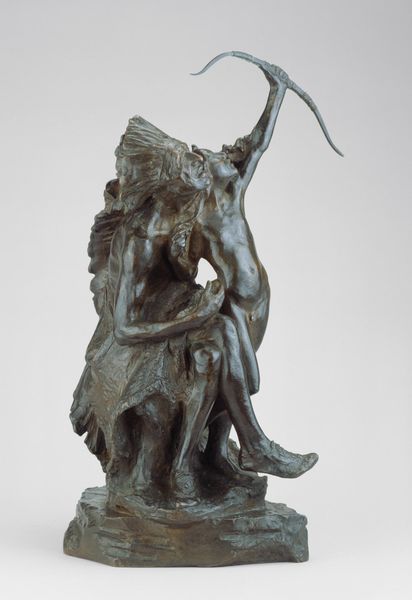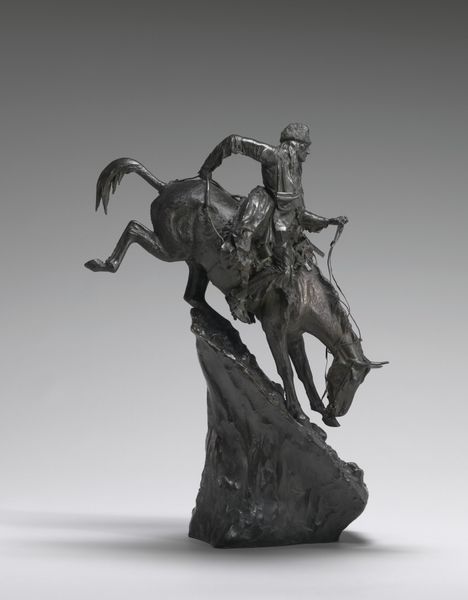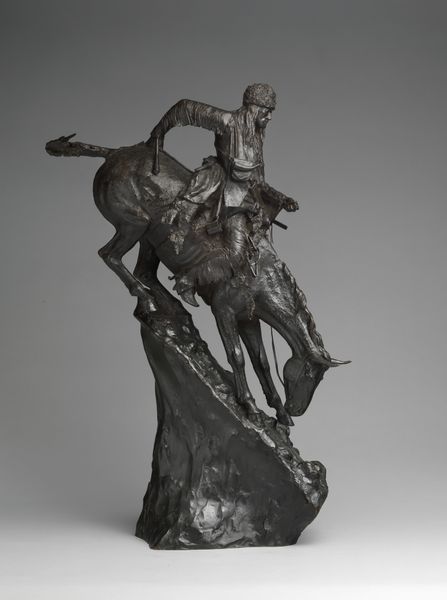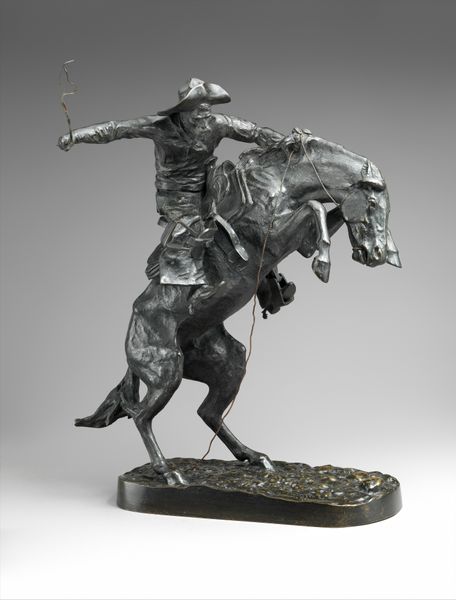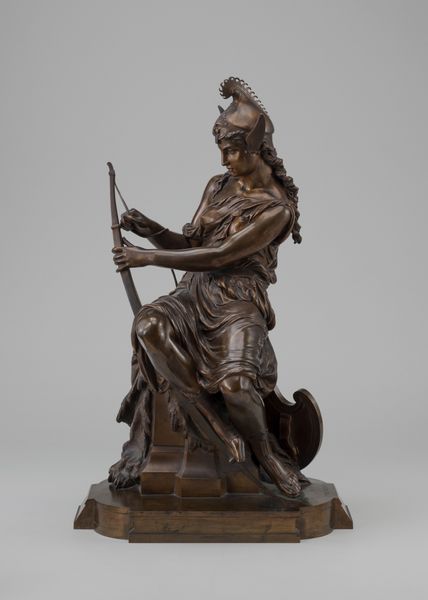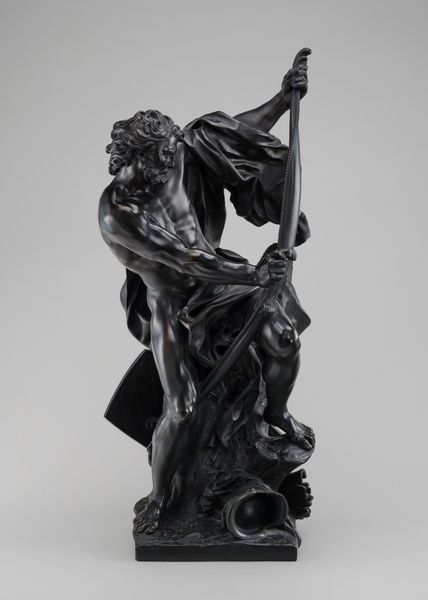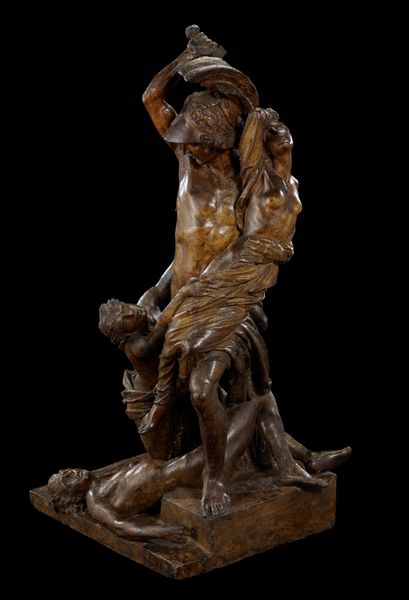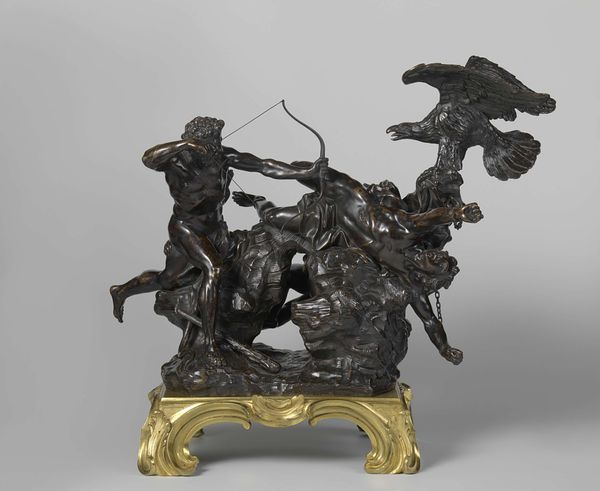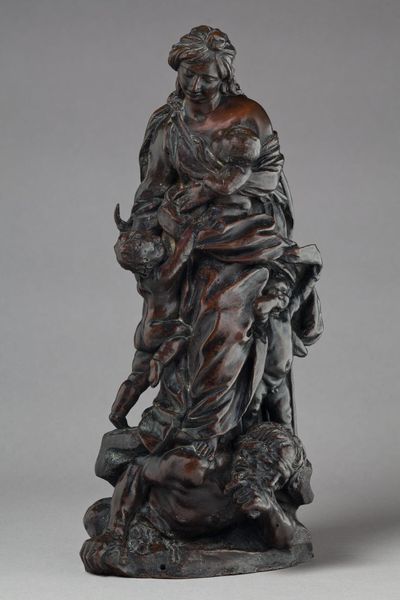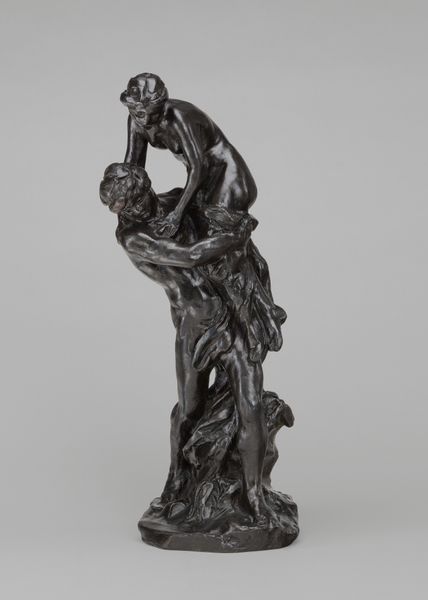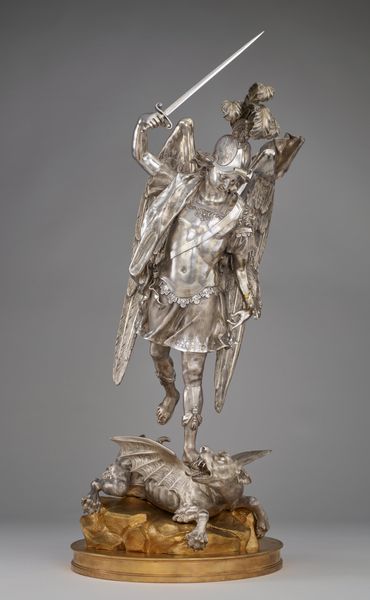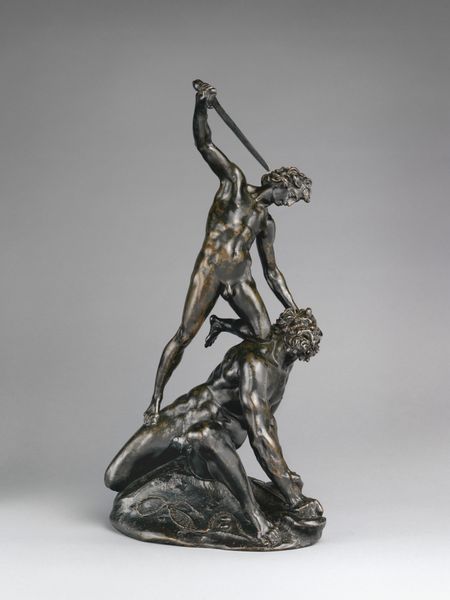
bronze, sculpture
#
allegory
#
sculpture
#
classical-realism
#
bronze
#
figuration
#
ancient-mediterranean
#
sculpture
#
history-painting
#
academic-art
Dimensions: overall: 81.28 × 38.1 × 35.56 cm (32 × 15 × 14 in.)
Copyright: National Gallery of Art: CC0 1.0
Curator: Take a moment with this compelling bronze sculpture, "Prometheus Attacked by the Eagle." Its creator, Charles Renaud, remains unfortunately unknown, but the enduring nature of the scene speaks volumes, doesn't it? Editor: My initial feeling is... agony. It’s all contortion and struggle. The textures of the eagle's feathers and Prometheus' straining muscles—it really amplifies the drama of the scene. It's meant to stir you. Curator: Precisely. Considering the socio-political context, this piece presents Prometheus as a radical figure of resistance against tyrannical power. He stole fire, knowledge, for humanity, and this act of defiance has led to perpetual torment. Renaud really frames Prometheus as an early, and arguably mythic, revolutionary. Editor: Absolutely, the eagle itself—a potent, complex symbol, universally. In nearly every culture, it is related to male virility, the divine solar power of patriarchal figures. Zeus’s eagle in this narrative becomes an instrument for punishing human ambition by suppressing Prometheus—he represents established oppressive power brutally exacting vengeance. It speaks to a universal dynamic. Curator: You know, thinking through this through the lens of contemporary social movements—like the fight for accessible knowledge, information and against censorship. Do you think this piece remains deeply relevant? What narratives do we draw in connecting Renaud's piece and more current works? Editor: I think the enduring resonance lies in its archetypal nature. The eternal return of power crushing the dissenting individual is depicted. Whether it's Prometheus, political dissidents, or silenced voices, this visual shorthand communicates immediately across generations and situations. The work encapsulates human suffering when clashing with systems of control, therefore being deeply recognizable and generating emotional responses. Curator: The bronze, chosen perhaps to highlight the enduring strength of both figures—the punisher and the punished? Interesting that the base is such a static form when the figures appear locked in perpetual and vicious, dynamic movement. Editor: The medium certainly enhances its gravity. It is bronze after all. Perhaps also emphasizing his internal strength, despite outward struggle. But the stasis of the base—it offers a stable foundation of tradition, perhaps hinting that such conflicts between the establishment and revolution are eternal. Curator: An appropriate point as our time here concludes, reminding us of both the temporal and timelessness inherent to this interpretation of Prometheus. Editor: A story of rebellion, perpetually echoing.
Comments
No comments
Be the first to comment and join the conversation on the ultimate creative platform.
